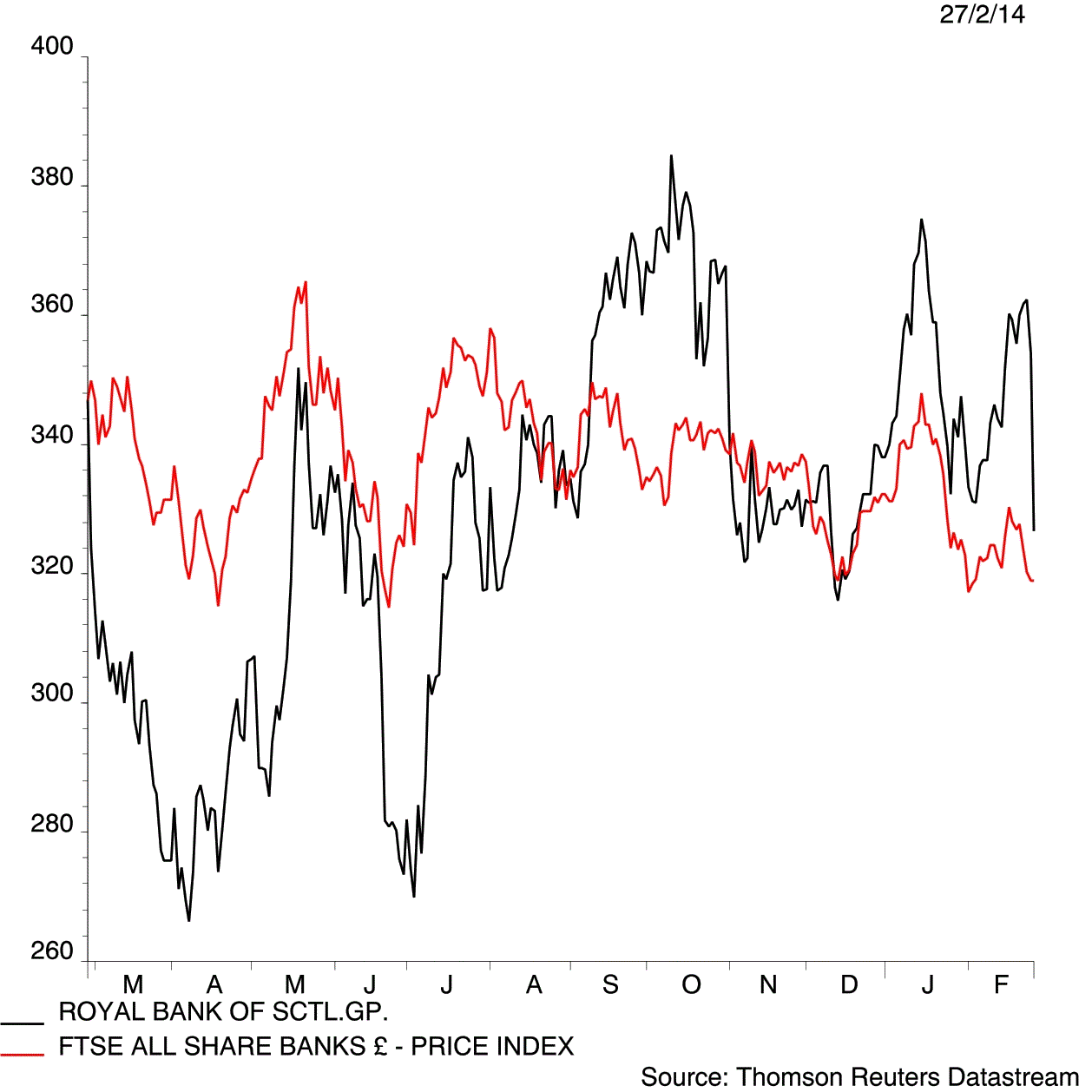
Royal Bank of Scotland (RBS) dives 6.7% to 330.3p after making its largest loss since its £45 billion tax-payer bail-out in 2008. That's prompted chief executive officer Ross McEwan to announce a turnaround plan to put the bank on a firmer footing by trimming £5 billion off its costs in the coming years.
At the heart of this plan is to follow Lloyds Banking's (LLOY) lead and pull out of some international markets to increase UK assets from 60% to 80% of its business, while reducing investment banking operations to focus on retail, small business and corporate customers.
RBS has made a good start in its attempt to reduce its losses by today raising £1.1 billion through exiting insurer Direct Line (DLG). It confirms the remaining 423.2 million ordinary shares held in the insurer have been sold at 263p each, a move ordered by the European Union under the terms of its bail-out.
The bank was £8.2 billion in the redlast year, up from a £5.2 billion loss in 2012, due to a 58% decline in profits from its markets division, rising costs and £3.8 billion product mis-selling compensation.
Controversy over bankers’ bonuses has resurfaced with RBS sharing £576 million among its staff. This was 15% less than it paid last year, but will not ease shareholder concerns that its staff are getting more of the bank’s cash than the owners.





